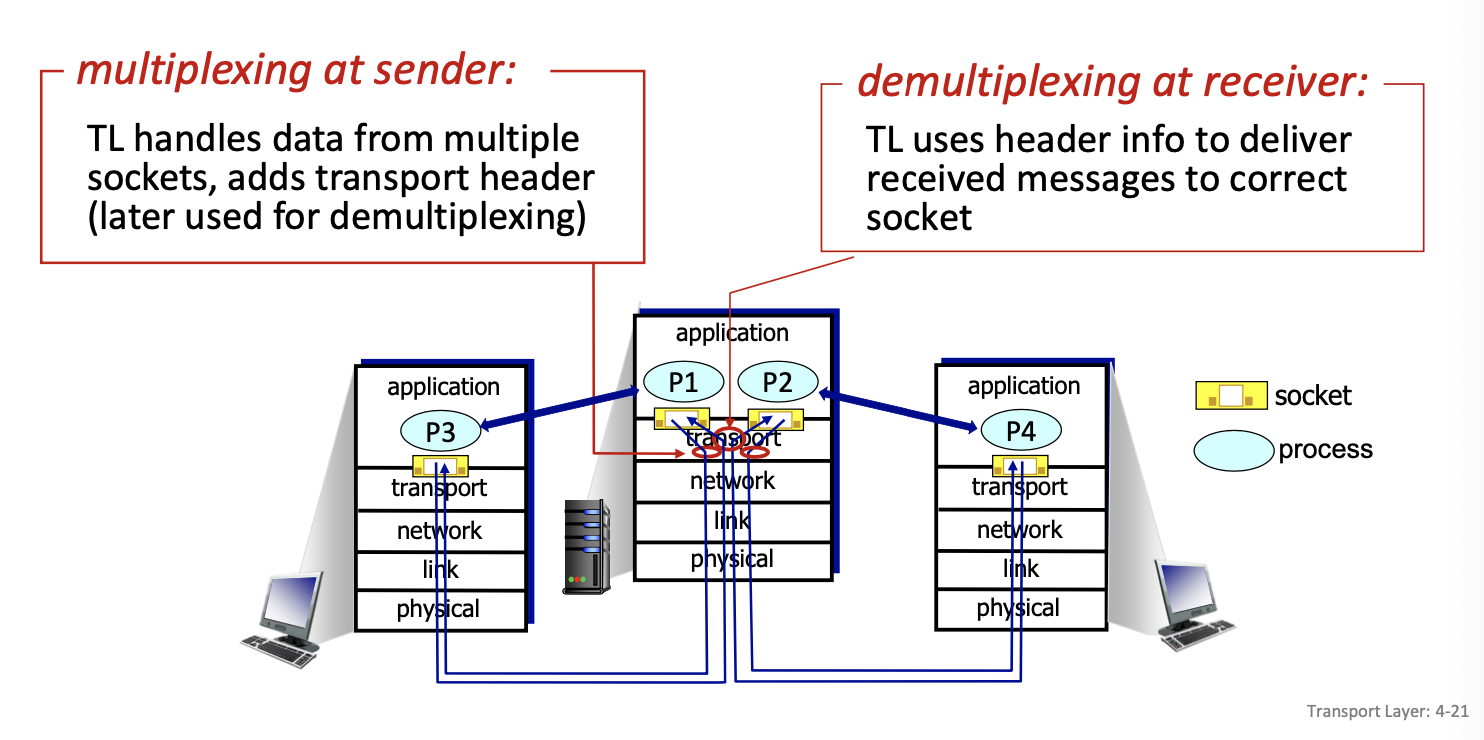Socket
- application process sends/receives messages to/from its socket (the socket is created by application)
Two socket types for two transport services:
- UDP socket at host
[IP@ (host), Port#(host)] - TCP socket
[IP@ source, IP@ dest, Port# s, Port# d]- possible that two TCP sockets → OS chose everything the same, but the IP@ of the source is what tells them apart.
Addressing processes
- to receive messages, processes must have identifier
- host device interface has unique 32-bit IP address
Does IP address of host on which process runs suffice for identifying the process?
No, many app processes can be running on the same host.
- identifier includes both IP address and port numbers associated with process on host.
- Ex port numbers:
- HTTP server: 80
- Mail server: 25
- To send HTTP message to gaia.cs.umass.edu web server:
- IP address: 128.119.245.12
- port number: 80
Multiplexing/demultiplexing at Transport Layer

How demultiplexing works
- host receives IP datagrams
- each datagram has source IP address, destination IP address
- each datagram carries at most one transport-layer segment
- each segment has source port number, destination port number
- host uses IP addresses & port numbers to direct segment to appropriate socket (different for UDP and TCP)

Socket programming with TCP
Client must contact server
- server process must first be running
- server must have created socket (door) that welcomes client’s contact
Client contacts server by:
- Creating TCP socket, specifying IP address, port number of server process
- when client creates socket: client TCP establishes connection to server TCP
Connection-oriented demultiplexing
- TCP socket identified by 4-tuple:
- source IP address
- source port number
- dest IP address
- dest port number
- demux: receiver uses all four values (4-tuple) to direct segment to appropriate socket
- server may support many simultaneous TCP sockets:
- each socket identified by its own 4-tuple
- each socket associated with a different connecting client

- Three segments, all destined to IP address: B, dest port: 80 are demultiplexed to different sockets
- trying to connect to server via TCP sockets
- TCP socket: remembers the past → connection oriented
Summary
- Multiplexing, demultiplexing: based on segment, datagram header field values
- UDP: demultiplexing using destination port number (only)
- TCP: demultiplexing using 4-tuple: source and destination IP addresses, and port numbers
- Note: Multiplexing/demultiplexing happen at all layers!!!
